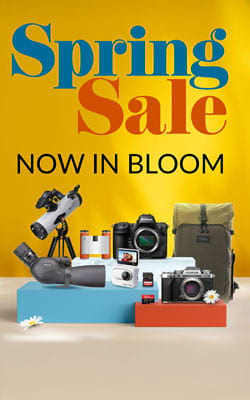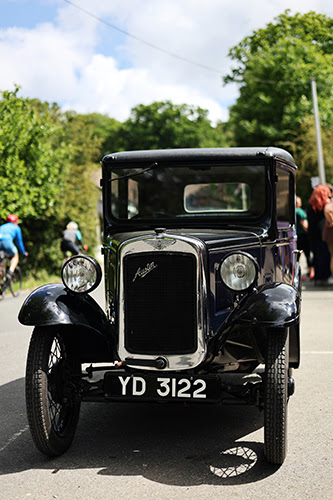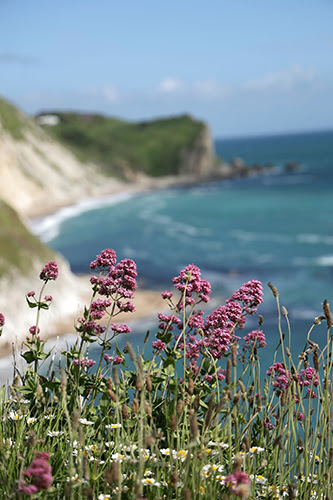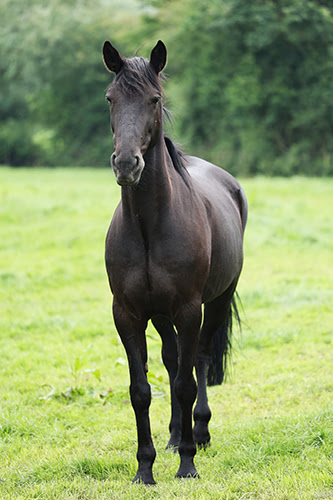A closer look at lenses and photography styles with the R8
For this mix of lenses and R8 camera review, I used the Canon R8 over 10 days with a selection of lenses I felt would be ideal for someone who wants a simple, affordable and fairly compact kit to shoot a variety of subjects. These compatible Canon R8 lenses included the 24-105mm f/4L IS USM, the 50mm 1.8, the 15-30mm, and the 70-200mm f/4L IS USM.
A compact prime
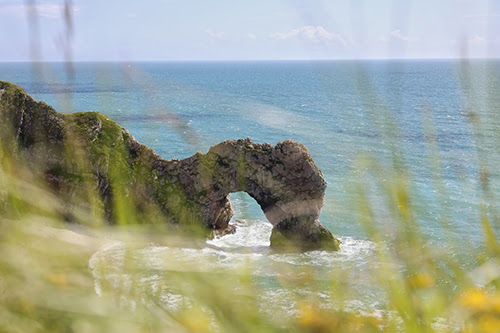
Once I’d set up how I thought I would use the camera most, I was away, starting with the nifty 50 I mentioned. This Canon RF lens is unbelievably small, certainly compared to other lenses I have used of a similar focal length, weighing just 160g (6oz) you hardly notice this on the R8.
If you are looking to add to your existing kit, this lens will not break the bank and offers great quality for the price you pay. It has pretty fast, smooth focusing, and can shoot at higher shutter speeds ensuring you don’t miss any moments.
Not only does the maximum F-stop of 1.8 allow you to create a shallow depth of field for the sought-after Bokeh look, but it means the lens performs well in lower light situations, and if you are a keen astronomer this can be ideal for those astro shots!
This lens does not have any image stabilisation or weather sealing, so care must be taken when using it in a sandy or even slightly damp/wet environment. It does however have a programmable control ring (which I would always recommend using) and the essential AF/MF switch for those finer adjustments.
As you would expect, the 50mm gives you standard coverage which allows you to shoot a variety of subjects including portraits, products, macro, landscapes and a lot more. I used this for flat-lay photography, not something I am overly confident in but certainly something that is popular among the masses on social media. The lens paired with the monochrome creative setting on the R8 produced a sharp, clean look and made it almost look minimalist.

As suggested by its affectionate name, I used the 50mm throughout the 10 days and actually, I was quite drawn to it. The smaller size, the high f-stop for that Bokeh look and just the versatility of the focal length made it kind of perfect for shooting a variety of subjects.
I quite liked using it for landscapes and general walkabout photography, with this classic focal length looking great and pushing the f-stop up to get as much of the background in focus worked well even with subjects in the foreground.
I also found myself changing to this lens when wanting to be a little more discrete in my photography, such as taking photos of macro and street subjects. Considering the Bokeh look you can achieve with this lens, I would certainly recommend this for product photography, not that I attempted this but the overall style of this lens can be very pleasing to the eye.
While I would not recommend starting out with this lens, as I believe having a sensible zoom lens to start out with can be a lot better for helping you settle with the camera and explore many genres of photography, if you are looking for a fast, reliable lens to add to your existing kit without breaking the bank this would certainly go down a treat!
A versatile zoom
Moving onto the 24-105mm f/4 L USM, this lens was a great companion despite being quite heavy, especially when not wanting to change my lens frequently when out and about, and I found myself starting the day with this lens on the R8 before knowing what sort of subjects I would be faced with. The lens is on the weighty side being 700g; however, used with the smaller and lighter body of the R8 I found this quite manageable and would consider this the perfect starting point for anyone looking to pick up the R8 or who may not know what it is they are wanting to shoot thanks to its versatile focal lengths.
This standard zoom worked well for me in many situations with a constant f-stop of f/4 throughout, allowing me to achieve a softer background and tackle more light-challenging environments without worrying about the extending focal length changing my maximum aperture.
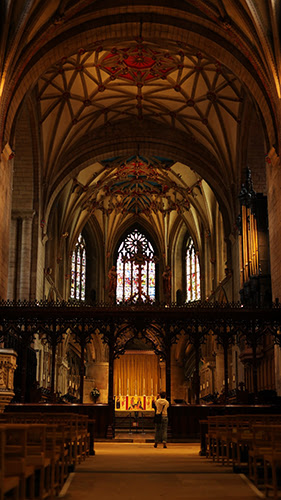
The lens offers fast focusing and great reach with a maximum of 105mm. Not only did it perform quickly in street situations but the image stabilisation helped with those handheld shots to eliminate any shake you may experience, whether that be coffee-deprived or cold-induced!
I don’t think I could fault the build quality of this lens, being an L USM lens, one of Canon’s higher quality finishes and having faster/more accurate autofocus systems, it was pretty perfect. As with all the lenses I borrowed, it has a customisable control ring at the front which was extremely helpful in changing settings quickly, coupled with the fact this lens is weather sealed; I didn't feel nervous using it in fine mist or in sandy/dusty environments.
The one drawback with this lens which some people may dislike is that this is an external rather than internal zoom. This personally did not bother me; however, I know some photographers do prefer internal zoom.
With this lens’s great range of focal lengths, it performs well for shooting a huge range of genres including Landscapes, Portraits, Travel, Street and a lot more!
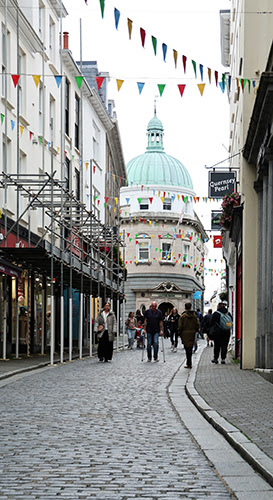
I personally used this lens to get started on my day out. It allowed me to decide if I needed to step up to the 70-200mm to give that little extra reach or even step down to the 15-30mm to get more of my subject in. Not only did it give me a great starting point, but I also found that the quality and opportunity this lens gave me meant I was using it as a general Landscape and Architectural/Candid shot lens. In addition to the range of focal lengths, it also gave me the constant f/4 required to gain a softer background and that more pleasing, soft, almost-Bokeh look. To start a photography journey with the R8, I do think this 24-105mm f/4 would be your best friend!
An ultra-wide companion
I hate to say it, but moving onto the 15-30mm f/4.5-6.3 which I unfortunately used the least!
It may be down to my personal preference and the sort of subjects I was shooting but I didn’t really use this lens as much, I do think that because I was shooting a huge variety of subjects and compositions this lens was not my go-to.
Despite this, this ultra-wide zoom lens was a comfortable weight to carry around in addition to the other lenses. Only weighing 390g, it is almost half the weight of the 24-105mm, which it did complement well as it covered the wider angles the 24 could not!
However much I would love to say this lens is versatile, this does depend on your own photographic style as I would say this lens would cover the more niche subjects. Although, the quality of the build, the weather sealing and the image stabilisation in the lens meant it performed well in handheld situations for photographing landscapes, seascapes and interiors!

With its near-silent autofocus and no focus breathing, this lens is great for content creation and video, especially for those social media enthusiasts who may need to shoot handheld on the street with good coverage to get group shots and as much in-frame as possible. Thanks to its portability, quality and wider focal lengths you may find that journalists, like content creators who need that coverage, will use this for group photographs and even interiors for adverts.
Although I didn’t use this lens as much as the others I had to hand, the shots I did gain with this lens mainly consisted of interior, landscape and seascapes which with its f/4.5 at 15mm and f6.3 at 30mm produced some sharp images with a slightly softer look at the 15mm end.
Shooting inside for some interior shots can be challenging as you do find you have to be careful the images do not underexpose; however, with the photographs I took at 15mm f/4.5 I felt I was still getting enough light in even in the evening light!
This lens can be a great addition to an existing kit for video creators and still photographers. It's an incredibly creative lens to use depending on your style. If you are looking for something that maybe the classic kit lens of 24-105mm or even 24-50mm misses, the 15-30mm can complement this nicely!
A far-reaching adventurer
Last but not least the 70-200mm f/4 L IS USM. Personally I thought this lens would be used the least, not only because it is one of Canon’s signature white lenses and I’d mainly be going out and about with the camera for street/landscapes but because of the larger focal length. Well… I was wrong. This lens came out more often than not when I couldn’t quite get the reach or the composition I needed with the 24-105mm. Not only this but I really enjoyed being able to take decent landscape shots which were just a little further away with the 70mm lens and step up to 200mm if I felt it was needed.

I was also pleasantly surprised that this lens was not the heaviest I borrowed, at only 695g, and I’d say is fairly compact for a zoom of this size!
As a weather-sealed and stabilised lens, I didn’t worry about using this on a boat and would confidently use this in a dusty/sandy environment as long as the right care is taken (that goes for any lens/camera!).
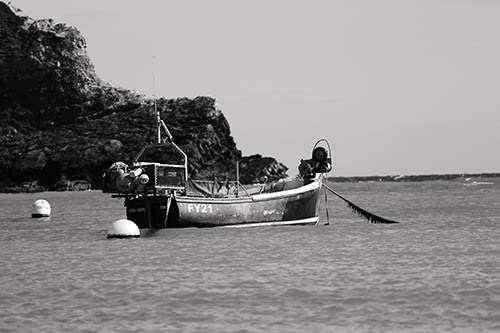
The image stabilisation of this lens is slightly different to the others I borrowed, with 3 modes which you can choose from. These are simply numbered 1,2 and 3 and switches enable you to quickly change these depending on your shooting environment and preference.
Mode 1, otherwise known as ‘Standard’, is used to correct both up/down and left/right movements, professionally known as Pitch and Yaw respectively. This mode tends to be best for if you are shooting static or slower-moving subjects but can be used for a variety of subjects, this was the mode I used the most as I wasn’t shooting many/if any fast-moving subjects.
Mode 2, ‘panning’, is best for when you are trying to follow a moving subject as this sets the lens to ignore the yaw movement (panning) and only corrects the pitch (up/down) movement and also gives a smoother image within the viewfinder. The great thing about the IS system is that it automatically detects the direction of the panning therefore you do not need to worry about the orientation you are shooting as it will work for both Landscape and portrait compositions.
Mode 3, ‘During Exposure only’, is best for Sports photography and fast-paced movement environments where you don’t know when or where the subject will be best to photograph. This mode takes the benefits from the IS system, both the pitch and yaw camera motion, but it instead is only active when the shutter is fully pressed and an image is captured. While this sounds a little backwards, by limiting the stabilisation to only the point of capture it ensures that there is the correct stabilisation for the image you are capturing, with this being centred in the barrel at the time.
Of course, if you are not shooting a massive amount of movement, mode 1 is perfectly suitable for an array of subjects.
The definite advantage of this lens is having the constant f/4 throughout the zoom which can provide a not quite fully Bokeh look but still a pleasing soft background for any images. The level of sharpness this lens also provides means that it can be a great addition for those wanting to shoot portraits or candid shots at events.
The lighter weight nature of this lens as well made it easier to transport along with other lenses, so if you are looking for a lens with more zoom but are travelling or don’t wish to carry much weight this is a great addition to a kit.
Personally, I used this lens when I didn’t quite have the reach I needed for those further-away landscape and architectural shots. I also paired this lens with the AI servo focus on the R8 and managed to get some decent photographs of seabirds.
While it wouldn’t be a lens I would immediately recommend for those wanting to get set up straight away unless you are sure of what you are shooting and know you will require a larger focal length, and in part due to the IS modes that may cause some confusion at first, if you aren’t worried about familiarising yourself with the lens before getting started, this lens will give excellent quality and be quite versatile.
The takeaway
So… If you are looking to get up and running as quickly as possible go for the 24-105mm, or even the kit lens (24-50mm) should suffice, and you will be able to get some fantastic shots utilising the R8’s capabilities and the excellent glass of Canon RF lenses. If you’re looking to add to your kit go for the 50mm - a pleasure to use and the quality is superb!
Grab your kit here
Get your hands on a Canon R8
- Add the Canon RF 50mm F1.8 STM lens
- Add the Canon RF 24-105mm f4 L IS USM Lens
- Add the Canon RF 15-30mm f4.5-6.3 IS STM
- Add the Canon RF 70-200mm F4L IS USM lens
Read next
Thank you!
Thanks for taking the time to read our blog, we really do hope they help you out and answer some of your questions. If you still have some unanswered, then please feel free to get in touch with our team of experts.
We have a LiveChat option on our website and we can, of course, be contacted via our email, we're also on the end of the phone too! Read more on how to contact us here >
Want to write for us?
If you've got experience with producing content on photo, video and/or optics products or techniques then we would love to hear from you. Contact our blog editor, Bea, with a sample of your work at bea@cliftoncameras.co.uk.
- By Troy Probert
- 2 Aug 2024



















































